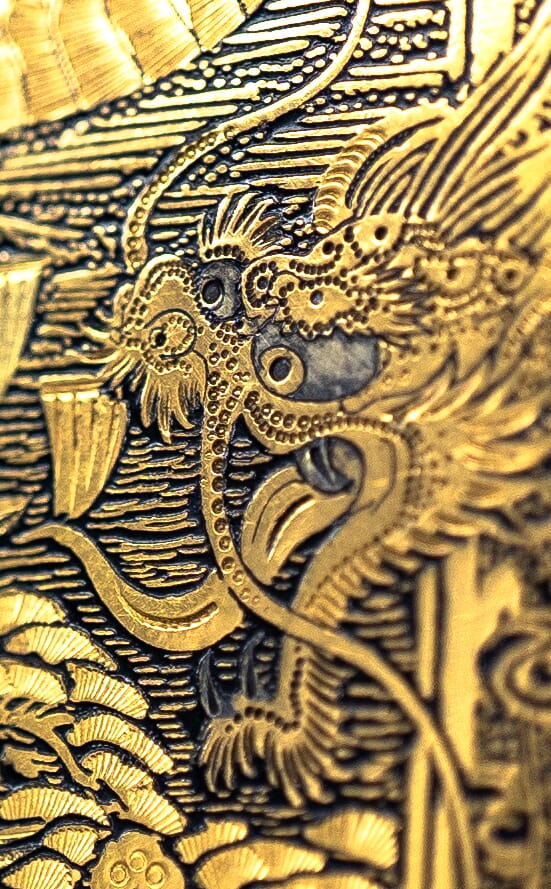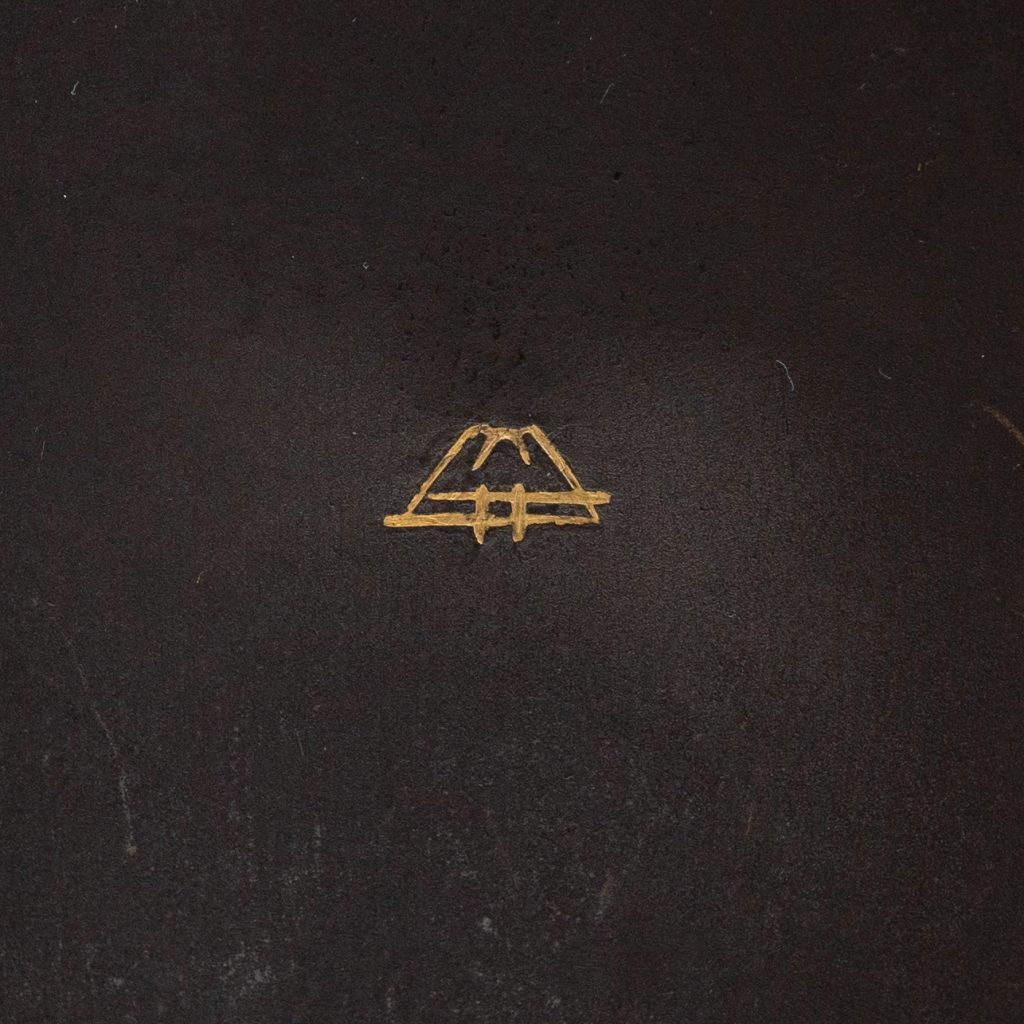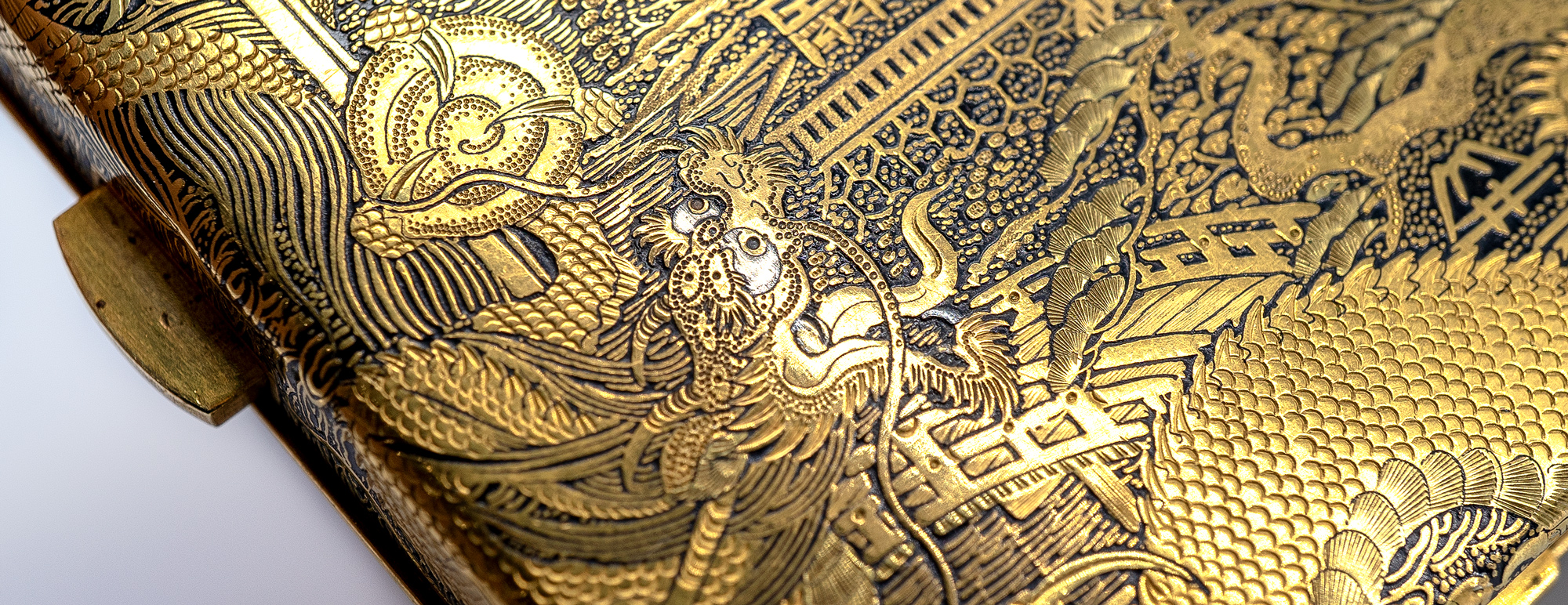

A Japanese Goldsmith’s Masterpiece
As the world watches the competition for Olympic Gold in Tokyo, we have a 100-year-old masterpieces of Japanese goldsmith’s work to share.
We were stunned when this small yet precious object walked into our shop recently. While we have had similar before, they inevitably are plain on the inside – often just with an empty space for cigarettes. This one is special: on opening, we see a place for a few of the required cigarettes – but inhabiting the other side is everything you need for an outing: this case is an all-in-one ‘evening bag’!


The mirror opens up to reveal a compartment with an ivory plaque, while below the small frieze of birds above is a surprise: two coin holders, such as the Victorians used for sovereigns and half-sovereigns.
The work is intensely beautiful, with two tones of gold along with small silver details (dragon’s eyes) contrasting vividly against a patinated iron ground. We call this ‘Damascened’, as Damascus was a point from which the art spread in the centuries after the decline of the Roman Empire. It reached Japan by the Asuka Period (592-710), and ‘Nunome Zo-gan’ ( ‘symbolizing inlaying‘ ) is the Japanese word for the technique.
You may not have noticed the signature hidden in plain sight… the one inside is well isolated, being inlaid gold on a bare iron ground, and depicting Mt Fuji. This is the mark of the “Fuji Damascene Company”, operating 1912-26. The outside has a splendid view of Mt Fuji off in the distance behind the temple tower – but down in the foreground is this same signature, amongst the plants of the garden.


Mt Fuji was appropriate as the mark, as ‘Fujii’ is the name of the firm’s founder – Yoshitoyo Fujii. Born 1868 into a metal-crafters family, he developed the family business into a thriving international ‘luxury goods’ supplier. They produced brooches, cufflinks, necklaces, card cases, cigarette cases, writing sets, vases, table boxes…. a long list of superbly detailed items. Some of his works were selected to represent Japan in the numerous overseas exhibitions that were so popular of in the earlier 20th century, where he won numerous medals. His works were presented to the Japanese Royal Family – he was regarded as the best craftsman of the Damascene ‘Nunome Zogan’ technique. Ironically, his work is not pure to the ancient Zogan technique: he developed a new technique, for which he received a patent: an etching method of housing his inserts, suggesting an acid being used to get the fine lines needed, not just a chisel.

The results are certainly spectacular, as these close-up photos reveal. This is a remarkably beautiful object to hold, and must have been a pleasure to use on a ‘night out’ by the lucky individual who received this as a gift 100 years ago: it certainly would have been a highlight at any party, back in the 1920’s!
